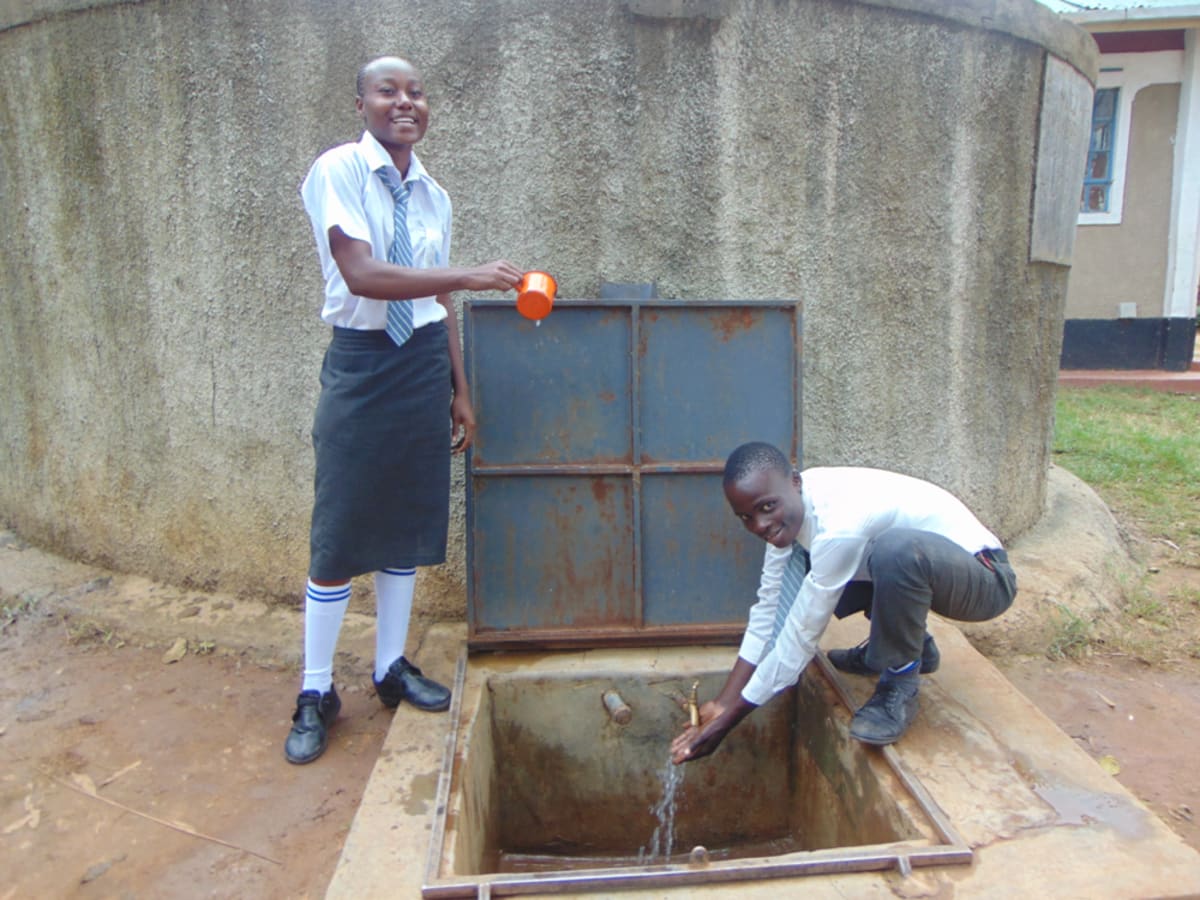Ebubere Secondary School is still on a journey of growth. It faces many challenges like lack of enough academic classrooms, few latrine blocks (toilets), and water scarcity. The school dug a hole and installed a hatch so that students don’t have to walk long distances for water. A bucket and rope are lowered down each time there’s a drinking, cooking, or cleaning need. However, the water in this well gets extremely low when it doesn’t rain, exacerbated by the fact that there are 300 students relying on the well’s water.
Students draw the water even though standing over the open hole is dangerous. Beyond the danger of falling, there’s the danger that the dirty water itself poses. The students draw up their water and drink it immediately. Because the water is contaminated, students suffer from typhoid.
Principal Elly Onyango tells us that at some point last year, they experienced a diarrhea outbreak due to the well water. One concerned community member, Mr. Josphat Ekaya, rush to Kisumu Town to get some chemicals so that the water could be treated. This solved the problem for a while but now it keeps recurring. This has put the lives of these water users at stake.
"Water scarcity has seen our students waste a lot of time at the well, especially when we want to clean our classrooms and a lot of water is needed. We have also had our staff and students complain of stomach-related diseases," said Principal Elly Onyango. He also admitted that one of his biggest fears is that one of the students will fall inside the well.
The initiative of starting this school was birthed by a Member of Parliament (MP) Mr. Benjamin Washiali during a meeting in December 2011. The idea was very well-received by the people. Mr. Washiali was able to secure the funds to buy the land, but by the year 2013 the school was still not able to enroll students because they didn’t have any buildings yet. The primary section then offered them a room in the year 2014, and they started with 39 students.
By the end of the year, the school was able to move into their own buildings that were under construction. The community members cooperated by providing pit latrines at their nearby homesteads for the teachers and students to use. They also provided furniture and even offered to cook meals in their homes for the teachers. The government stepped in and provided more funds that have let the school grow gradually.
What we can do:
Training
Having clean water is extremely important, but it's equally important to handle and store this water in a wise way. A clean self and environment will go a long way in ensuring that each student lives a healthy life.
Training will be held for two days. The facilitator will use PHAST (participatory hygiene and sanitation transformation), ABCD (asset-based community development), CTC (child to child), lectures, group discussions, and handouts to teach health topics and ways to promote good practices within the school. The CTC method will prepare students to lead other students into healthy habits, as well as kickstart a CTC club for the school.
Handwashing Stations
The available water for handwashing near the toilets is kept in 20-liter jerrycans that are difficult to use since they do not have taps. One has to tilt the jerrycan and wash hands from the opening of the jerrycan.
This CTC club will oversee the new facilities, such as handwashing stations, and make sure they are kept clean and in working condition. The two handwashing stations will be delivered to the school, and the club will fill them with water on a daily basis and make sure there is always a cleaning agent such as soap or ash.
VIP Latrines
Due to the high population, the latrines are overused and not well-maintained. They are smelly, with those for the boys being the worst since they do not have a separate urinal.
Two triple-door latrines will be constructed with local materials that the school will help gather. Three doors will serve the girls while the other three serve the boys. And with a new source of water on school grounds, students and staff should have enough to keep these new latrines clean.
Rainwater Catchment Tank
A 50,000-liter rainwater catchment tank will help alleviate the water crisis at this school. The school will also help gather the needed materials such as sand, rocks, and water from the well for mixing cement. Once finished, this tank can begin catching rainfall that will be used by the school’s students and staff.
We and the school strongly believe that with this assistance, standards will significantly improve. These higher standards will translate to better academic performance!

 Rainwater Catchment
Rainwater Catchment
 Rehabilitation Project
Rehabilitation Project

































